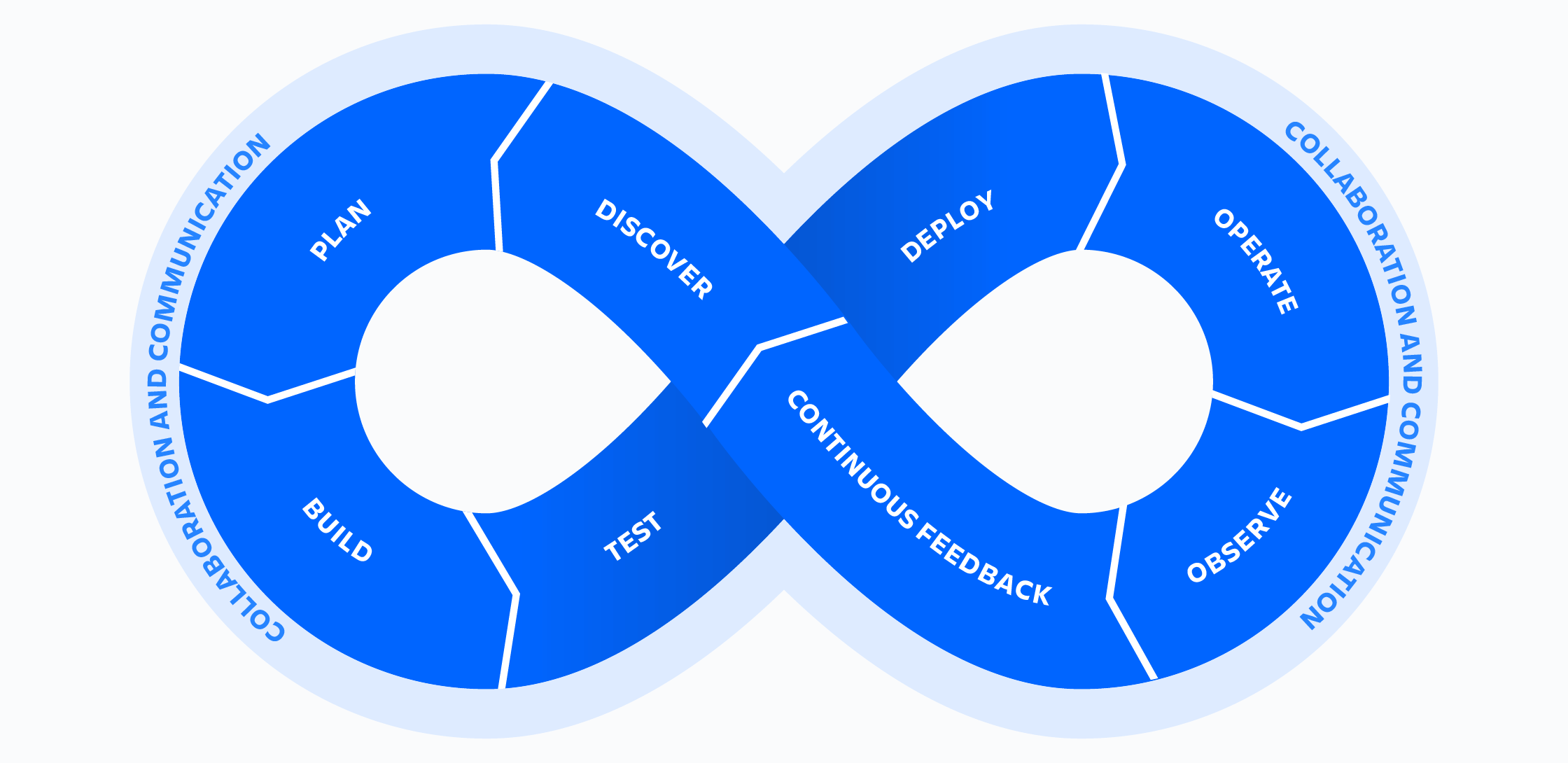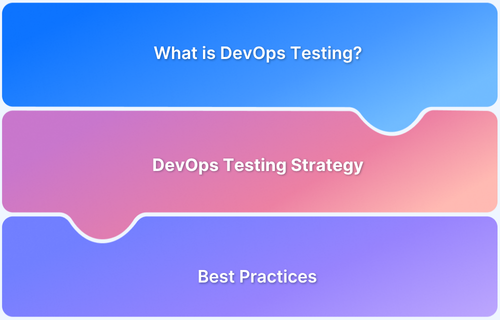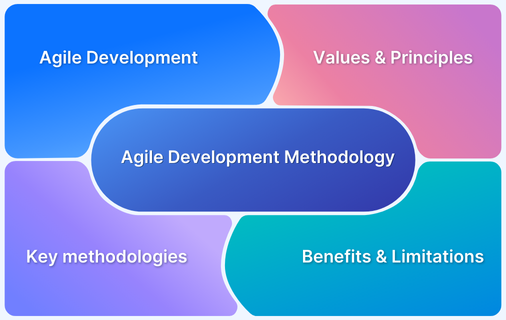CI/CD, Agile, and DevOps are some of the most commonly used terms in software development and testing. However, people often wonder about the differences between these concepts, specifically how DevOps differs from Agile or what sets CI apart from CD.
Overview
Understanding the differences between CI/CD, Agile, and DevOps is essential for delivering high-quality software efficiently. While these concepts are often used together, each has its own focus and purpose.
Agile vs DevOps vs CI/CD
- Agile is a software development methodology focused on flexibility, collaboration, and delivering small parts of the software in short cycles called sprints.
- DevOps is a culture that blends development and operations. It aims for seamless collaboration between teams to improve the speed and reliability of software delivery through automation and shared responsibility.
- CI/CD (Continuous Integration/Continuous Delivery) emphasizes automating the process of integrating and deploying code, ensuring faster releases with minimal manual intervention.
In short, agile focuses on iterative development and teamwork, while DevOps emphasizes collaboration and automation between development and operations teams. On the other hand, CI/CD, a technique within DevOps that automates integration, testing, and deployment for faster and more consistent software delivery.
This article explores CI/CD, Agile, and DevOps, highlighting their differences and how they relate to each other in modern software development.
What is CI/CD?
CI/CD stands for Continuous Integration and Continuous Delivery/Continuous Deployment, which are practices aimed at automating and improving the software development lifecycle. These practices ensure that code changes are automatically integrated, tested, and deployed, making the development process faster, more efficient, and less error-prone.
CI/CD primarily speeds up the development and release cycles through automation while maintaining software quality. Understanding the difference between CI and CD is essential to better understand what it means.
Difference Between CI and CD
CI or Continuous Integration is an engineering practice in which members of a development team integrate their code at a very high frequency. Teams implementing CI aim to integrate code daily or, in some cases, even hourly. Since integration has usually been a time and effort-consuming activity, CI tactics depend on automation tools that execute build and testing.
The point of CI is to establish a software-defined lifecycle that decreases the effort required for build and integration. Continuous integration also results in the detection of errors in code in the early stages.
CD or Continuous Delivery is the practice of ensuring that code is always in a deployable state. All code changes – new features, bug fixes, experiments, configuration changes – are always ready for deployment to a production environment.The point of CD is to make deployments routine events that can occur at any moment on demand. It doesn’t matter if deployment involves a large-scale distributed system, an embedded system, or a complex prod environment.
CD can also mean Continuous Deployment – a practice in which all changes are automatically deployed into production. Unlike Continuous Delivery, there is no final manual approval before releasing into production.
For both these practices, it is vital to have the right CI/CD tools in place. No CI/CD pipeline can work without the optimal tools.
CI vs. CD
Here’s a table highlighting the difference between CI and CD:
| Aspect | Continuous Integration | Continuous Delivery |
|---|---|---|
| Focus | Integrates code into a shared repository frequently. | Tests, stages, and deploys code after integration to deliver updates. |
| Purpose | Detect and fix integration issues quickly. | Ensure the code is always ready for deployment. |
| Automation | Automates testing and validation before integration. | Automates the release process for efficiency and reliability. |
| Complexity & Cost | Less complex and cost-effective. | More complex and expensive due to deployment readiness. |
| Benefits | Improves team collaboration, transparency, and stability. | Reduces risks, ensures smoother releases, and enables faster market response. |
Read More: How to implement a CI/CD Pipeline?
What is Agile?
In software development, the term agile refers to a set of frameworks and practices that follow the manifesto for Agile Software Development principles. It denotes iterative and incremental methods such as Scrum, Kanban, Scaled Agile Framework (SAFe), Lean Development, and Extreme Programming (XP).
More than anything else, it seeks to facilitate faster delivery through intense collaboration, iterative feedback cycles, and self-organizing cross-functional teams that focus on specific processes and tools tailored to specific tasks.
- Agile development focuses most emphatically on collaboration and self-organization.
- Teams create solutions together and are, for the most part, cross-functional. This means there is no watertight division between teams. For example, testers are just as involved from the beginning as developers. Additionally, each development sprint takes user feedback into account.
- Agile testing is ideal for situations in which both business and technical requirements change as the project advances. Since that is how most projects work in the realm of dynamic digital users, agile is one of the most commonly followed development approaches.
What is DevOps?
As agile developers became more effective at writing and pushing code, having a strict distinction between QA and Dev teams proved inefficient. To solve this, the DevOps approach was established.
DevOps primarily refers to a mindset that focuses on communication and collaboration between developers and testers. This was necessary because, in non-DevOps setups, devs are often unaware of QA and Ops roadblocks. Moreover, QAs and Ops personnel often lack context on the business requirement of any software since they work across multiple projects.
- The point of DevOps is to ensure that developers and QAs are on the same page at all project stages.
- In a non-DevOps setup, devs throw code “over the wall” to QAs. QAs find bugs and bring them to devs to be debugged.
- Devs blame QAs and the testing environment for the bugs. QA throws the code “over the wall” to Ops when bugs are finally resolved.
- Since Ops teams have to limit changes to their system, there is a high possibility of their system crashing when the code is released. Ops blames QAs and devs, and the cycle continues.
- As posited by the DevOps setup, the solution is for cross-functional teams. Developers and IT, and operations work together since collaboration must include everyone with a stake in the software delivery.
Successful DevOps implementation relies heavily on automation. It is of utmost importance to use the right test automation frameworks, established in the right toolchains to automate large sections of the development and deployment pipeline. However, DevOps is not just about tools. It starts with a change in mindset amongst all parties involved and uses tools to execute that mindset in software creation and testing.
Read more: DevOps Lifecycle: Different Phases in DevOps
How is DevOps different from Agile?
DevOps is more focused on identifying ways to streamline and improve existing/new processes to maximize efficiency and increase automation. It primarily looks at improving consistency, stability, and planning efficiency. It brings together cross-functional teams together to focus on software development and delivery.
Agile, on the other hand, focus on identifying and building features that match the user’s expectation. The process is specific to the development team and involves steps to increase their productivity.
Agile vs. DevOps
Here’s a concise comparison of the differences between Agile and DevOps:
| Aspect | Agile | DevOps |
|---|---|---|
| Focus | Continuous modification and iterative development. | Continuous testing, integration, and delivery. |
| Team Structure | Small, cross-functional teams. | Larger teams involving developers, operations, and other stakeholders. |
| Execution | Follows structured frameworks like Scrum and Sprints. | Focuses on collaboration without a specific framework. |
| Feedback | Client-driven feedback. | Internal team-driven feedback. |
| Goal | Bridges the gap between client needs and development/QA teams. | Bridges the gap between development, testing, and operations. |
Read More: Agile vs DevOps: What’s the Difference?
How is CI CD different from DevOps?
DevOps and CI CD are closely related to each other. This means that teams employing DevOps take advantage of CI/CD. Continuous Testing in DevOps helps explore critical bugs in the initial stages itself to save the cost of bug fixing in later stages.
CI/CD vs. DevOps
Here’s a table highlighting the differences between CI/CD and DevOps
| Aspects | CI/CD | DevOps |
|---|---|---|
| Focus | Automating code integration, testing, and deployment. | Collaboration between development and operations for faster, reliable delivery. |
| Scope | Part of the software delivery pipeline. | Covers the entire software development lifecycle (SDLC). |
| Process | Involves Continuous Integration, Continuous Delivery, and Continuous Deployment. | Includes CI/CD, infrastructure management, monitoring, and security. |
| Goal | Ensure smooth, automated software release. | Improve collaboration, automation, and efficiency across teams. |
| Frameworks & Tools | Uses tools like Jenkins, GitHub Actions, and CircleCI. | Uses CI/CD tools along with Kubernetes, Docker, and cloud platforms. |
Read More: What is Continuous Delivery in DevOps?
Source: Atlassian
Differences between CI/CD, Agile and DevOps
There are no fundamental differences except the levels at which each term operates.
- Agile is an extensive framework that encompasses the other two practices. It is a software development philosophy implemented in various methodologies – Scrum, Kanban, Scaled Agile Framework (SAFe), etc.
- DevOps is an agile development practice and mindset that uses agile principles (collaboration, communication, utilizing the right tools) to streamline software building, testing, and release.
- CI/CD is a DevOps tactic, which makes use of the right automated testing tools to implement agile development.
All three practices have the same objective – create better software in lesser time. There is no watertight difference between them since these practices overlap almost all the time. Any developer/QA/Ops who is acquainted with one practice will, almost inevitably, be acquainted with the others.
BrowserStack provides several tools that are essential to building a CI/CD and DevOps-empowered testing pipeline. Firstly, it provides access to a real device cloud hosting 3500+ real browsers and devices for testing. Secondly, it offers a robust cloud Selenium grid with 99% uptime, enabling test automation on real browsers and devices.
Additionally, BrowserStack offers integrations with all major CI/CD tools, thus simplifying testing protocols for QAs and developers.
DevOps and CI/CD are the most valuable and productive software development methods. When implemented accurately, they become instrumental in creating software that meets (and exceeds) user expectations every single time.
Conclusion
CI/CD, Agile, and DevOps each streamline software development but serve different purposes. CI/CD automates testing and deployment, Agile ensures flexibility and rapid iterations, while DevOps bridges development and operations for seamless delivery. Together, they enhance speed, collaboration, and software quality.
To implement these effectively, BrowserStack provides a real-device cloud and a reliable Selenium grid, enabling seamless automation and real-world testing for faster, high-quality releases.







